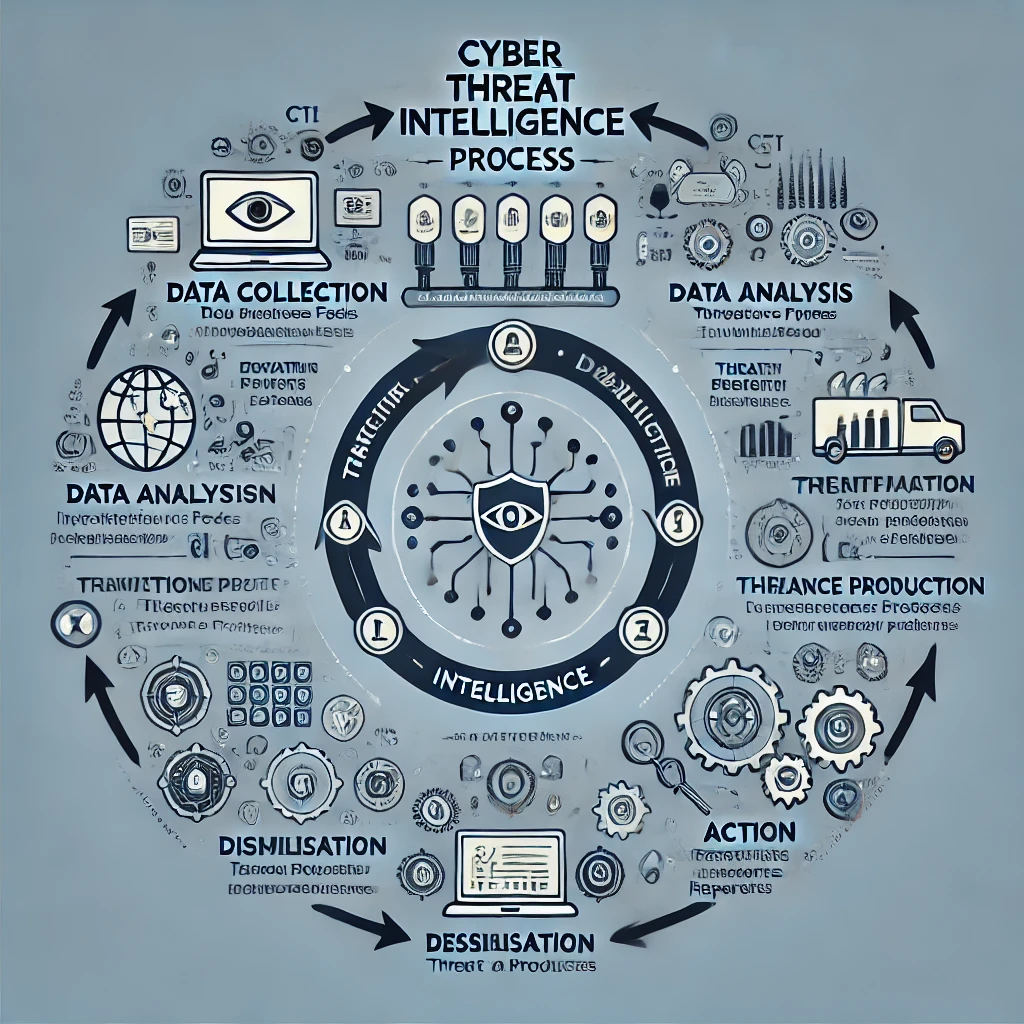The Growing Importance of Cyber Threat Intelligence (CTI)
Cyber Threat Intelligence (CTI) has become an integral part of modern cybersecurity strategies. As traditional security measures are no longer sufficient to combat increasingly sophisticated cyber threats, Threat Intelligence plays a critical role in enhancing the security posture of organizations. CTI is not just about detecting and responding to incidents but understanding the tactics, techniques, and procedures (TTPs) used by cyber adversaries to predict future attacks and identify vulnerabilities before they can be exploited.
Understanding and Analyzing Adversary Behavior
In essence, CTI involves analyzing adversary behavior, motivations, and objectives. It’s about transforming raw data from sources like open-source intelligence (OSINT), proprietary threat feeds, and external collaborations into actionable insights that inform decision-making at all levels. This shift from reactive to proactive security allows organizations to mitigate risks before attacks occur, providing a strategic advantage.
Enhancing Risk Management with CTI
The integration of CTI into an organization’s security framework enables more informed, efficient risk management. It allows security teams to prioritize threats based on intelligence, focus on likely attack vectors, and implement appropriate mitigation strategies. By understanding emerging threats and staying ahead of them, organizations can minimize the impact of potential breaches.
Proactive Threat Hunting: Leveraging CTI
One of the most effective applications of CTI is Threat Hunting. By using CTI to guide searches for signs of compromise within a network, security teams can detect suspicious activities early, often before significant damage is done. This proactive approach, coupled with advanced analytics, allows organizations to identify hidden threats in their infancy, preventing more serious breaches from occurring.
Challenges in Implementing CTI
Despite its benefits, implementing CTI presents challenges, particularly in managing the large volumes of data generated. Effective tools and technologies, along with skilled personnel, are essential for processing and analyzing this data efficiently. Without proper infrastructure, CTI can become overwhelming, which is why investing in automated threat intelligence platforms and training personnel to leverage this data is crucial.
CTI as a Strategic Edge in Cybersecurity
Ultimately, the goal of Cyber Threat Intelligence is to provide organizations with a strategic edge in the face of evolving cyber threats. By using relevant, timely information, and acting on it, organizations can better safeguard their assets, reduce risk, and ensure business continuity. As the threat landscape continues to grow more complex, CTI will remain a cornerstone of effective cybersecurity strategies.
The Strategic Role of Delivery Reports in Cyber Threat Intelligence
Cyber Threat Intelligence (CTI) serves as a critical pillar of organizational defense, offering actionable insights to safeguard against evolving threats. However, its value extends beyond mere data collection and analysis. The communication of CTI findings to other departments within the organization is equally vital, ensuring that intelligence is translated into actionable strategies. This is where threat intelligence delivery reports come into play, acting as the bridge between cybersecurity teams and the rest of the business.
Bridging Intelligence and Action Through Delivery Reports
Delivery reports act as the conduit between CTI analysts and stakeholders across an organization, translating technical intelligence into practical recommendations. These reports are critical tools for maintaining situational awareness, tracking threat actor activity, and informing strategic decisions across all levels of the business.
A well-crafted CTI delivery report typically includes the following:
- Executive Summary: A high-level overview summarizing the findings, potential impacts, and recommended actions, tailored for decision-makers who may not possess deep technical knowledge.
- Threat Landscape: A detailed analysis of the current threat environment, focusing on relevant actors, campaigns, and vulnerabilities that could impact the organization.
- Indicators of Compromise (IOCs): Specific technical artifacts, such as malicious IPs, domains, file hashes, or behavioral patterns, that can be used by security teams to detect and respond to threats.
- Risk Assessment: A contextualized evaluation of how identified threats align with the organization’s risk profile, helping prioritize mitigation efforts.
- Actionable Recommendations: Clear and concise guidance on defensive measures, ranging from patch management and system hardening to proactive threat hunting strategies.
What a CTI Report Should Avoid
While a comprehensive report is invaluable, unnecessary complexity or irrelevant details can dilute its effectiveness. Avoid overloading the document with overly technical jargon or excessive raw data that has not been contextualized. The goal is to provide actionable intelligence, not a data dump, and to maintain a balance between detail and clarity.
Frequency and Relevance
The cadence of CTI reporting should align with the organization’s operational tempo and threat landscape dynamics. Reports can be issued on a regular basis, such as weekly or monthly, to provide routine updates, or on-demand in response to significant incidents or emerging threats. For example:
Routine Reports: Ensure that all departments remain informed about ongoing risks and preventive measures. These are vital for security teams, IT operations, and even strategic business units planning growth or new ventures.
Ad Hoc Reports: Delivered during critical incidents or significant shifts in the threat landscape, these reports enable swift alignment and coordinated responses across the organization.
By ensuring reports are timely, focused, and actionable, the CTI team becomes a trusted advisor, bridging the gap between technical analysis and business operations.

